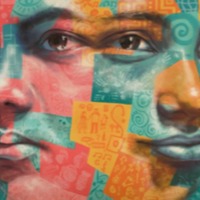
Suleiman
There is an estimated 48,000 people living in modern slavery in Libya (GSI 2018). Libya is a major transit destination for migrants and refugees hoping to reach Europe by sea. Human trafficking networks have prospered amid lawlessness, created by the warring militias that have been fighting for control of territories since the toppling of Muammar Gaddafi in 2011. Highly organized trafficking and migrants smuggling networks that reach into Libya from Niger, Nigeria, Chad, Eritrea, Ethiopia, Somalia, Sudan, and other sub-Saharan states subject migrants to forced labor and forced prostitution through fraudulent recruitment, confiscation of identity and travel documents, withholding or non-payment of wages, debt bondage, and verbal, physical, and sexual abuse. In some cases, migrants reportedly pay smuggling fees to reach Tripoli, but once they cross the Libyan border they are sometimes abandoned in southern cities or the desert where they are susceptible to severe forms of abuse and human trafficking. Suleiman travelled from Sudan to Egypt and from there was smuggled into Libya with his brother. Upon arrival they were held in a warehouse for three days before being released and going to Tobruk. Thinking they were being taken to Tripoli, they were shut inside a van with no view to the outside and arrived instead on a farm. A ransom of 15,000 Libyan dinars was demanded from each person for their release. They were stripped of their clothes, beaten, submitted to electrocutions and burnings while being weakened from hunger and thirst.
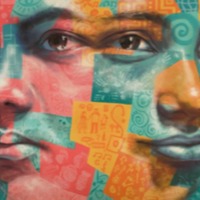
Vanessa
There is an estimated 48,000 people living in modern slavery in Libya (GSI 2018). Libya is a major transit destination for migrants and refugees hoping to reach Europe by sea. Human trafficking networks have prospered amid lawlessness, created by the warring militias that have been fighting for control of territories since the toppling of Muammar Gaddafi in 2011. Highly organized trafficking and migrants smuggling networks that reach into Libya from Niger, Nigeria, Chad, Eritrea, Ethiopia, Somalia, Sudan, and other sub-Saharan states subject migrants to forced labor and forced prostitution through fraudulent recruitment, confiscation of identity and travel documents, withholding or non-payment of wages, debt bondage, and verbal, physical, and sexual abuse. In some cases, migrants reportedly pay smuggling fees to reach Tripoli, but once they cross the Libyan border they are sometimes abandoned in southern cities or the desert where they are susceptible to severe forms of abuse and human trafficking. In Nigeria, Vanessa struggled to house and feed herself and her three children after being thrown out of their home by her abusive husband. She worked as a hawker, selling fruit, and as a hairdresser, but worried constantly about money. Then a friend mentioned a sister in Italy with a hairdressing salon and recommended Vanessa to work there. She was told it would be an easy journey through Libya, however after arriving in Tripoli, Vanessa and her fellow travellers were housed in a smuggler’s compound when a fight broke out among neighbourhood gangs. During this time, her baby developed a fever and became critically ill, dying shortly afterward. She set off from Tripoli on a smuggler’s boat headed for Italy, but the boat was captured by bandits who took them back to Libya and held the passengers for ransom. Vanessa’s friend's sister in Italy paid for her release, but she was unable to make it to Italy. When she tried for a second time, she was caught by the Libyan Coast Guard, brought back, and imprisoned. A Ghanaian man bailed her out of prison only to sell her to a brothel where she had to work as a prostitute to pay off her debt.
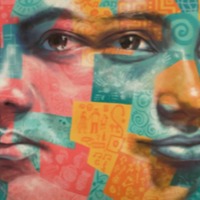
Vera
There is an estimated 48,000 people living in modern slavery in Libya (GSI 2018). Libya is a major transit destination for migrants and refugees hoping to reach Europe by sea. Human trafficking networks have prospered amid lawlessness, created by the warring militias that have been fighting for control of territories since the toppling of Muammar Gaddafi in 2011. Highly organized trafficking and migrants smuggling networks that reach into Libya from Niger, Nigeria, Chad, Eritrea, Ethiopia, Somalia, Sudan, and other sub-Saharan states subject migrants to forced labor and forced prostitution through fraudulent recruitment, confiscation of identity and travel documents, withholding or non-payment of wages, debt bondage, and verbal, physical, and sexual abuse. In some cases, migrants reportedly pay smuggling fees to reach Tripoli, but once they cross the Libyan border they are sometimes abandoned in southern cities or the desert where they are susceptible to severe forms of abuse and human trafficking. At her school in Nigeria, Vera and her brother were being threatened by gangsters. The situation became dangerous, and her mother was very worried about her security. Vera felt she had no other option than to flee from the country. She contacted a smuggler who would take her to Europe via Libya. She was surprised when the woman frankly suggested that she could earn money both in Libya and in Europe as a prostitute. Vera said she would not do such a thing, and the woman did not press the issue. When they arrived in Libya, she called her and told her that now, she must work as a prostitute to pay her debt.
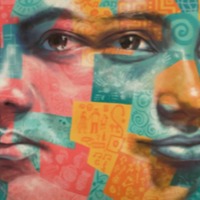
Yasmiin
There is an estimated 48,000 people living in modern slavery in Libya (GSI 2018). Libya is a major transit destination for migrants and refugees hoping to reach Europe by sea. Human trafficking networks have prospered amid lawlessness, created by the warring militias that have been fighting for control of territories since the toppling of Muammar Gaddafi in 2011. Highly organized trafficking and migrants smuggling networks that reach into Libya from Niger, Nigeria, Chad, Eritrea, Ethiopia, Somalia, Sudan, and other sub-Saharan states subject migrants to forced labor and forced prostitution through fraudulent recruitment, confiscation of identity and travel documents, withholding or non-payment of wages, debt bondage, and verbal, physical, and sexual abuse. In some cases, migrants reportedly pay smuggling fees to reach Tripoli, but once they cross the Libyan border they are sometimes abandoned in southern cities or the desert where they are susceptible to severe forms of abuse and human trafficking. Yasmiin had a small restaurant in her home town in Somalia. One day she was kidnapped by some men and raped. After that she became ostracised in her community, people stopped talking to her and stopped coming to her restaurant. She could not stay there any longer and decided to leave Somalia, taking the smuggler route through Yemen and Sudan to Libya, hoping to reach Europe. She was imprisoned in Libya and eventually evacuated by UNHCR to Niger where she is waiting for re-settlement.
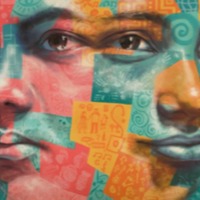
Yehia
Egypt is a source, transit and destination country for women and children trafficked for the purposes of forced labour and sexual exploitation. The local dimension of human trafficking includes child labour, the sexual exploitation of children, the sale of human organs, and various forms of prostitution. Children are forced into domestic service, street begging drug trafficking, quarrying, and agricultural work in the country. NGOs report the lack of economic and educational opportunities cause family members to subject women and girls to sex trafficking to supplement family income, and in some cases women and girls are raped to coerce or forced them into prostitution. Child sex tourism occurs in Cairo, Alexandira, and Luxor and Egyptian women and girls are purchased for 'temporary' or 'summer marriages' for the purpose of commercial sex, including sex trafficking, and forced labour. Egyptian adults are subjected to forced labour in construction, agriculture, domestic work, and low-paying service jobs in the region. Refugees from Syria, Sudan, South Sudan, and Yemen who have settled in Egypt in Egypt are also at an increased risk of trafficking, forced labour, forced marriage, and sexual exploitation. When the civil war in Yemen erupted in 2015, Yehia’s parents advised him to flee to Egypt to avoid conscription by one of the warring factions. Having arrived in Cairo via Sudan, Yehia contacted a smuggler who promised to take him across the sea to Italy. He was taken to a beach near Alexandria with other travellers and boarded a small boat, but the smugglers turned out to be gangsters who robbed the passengers and were going to put them ashore when the Coast Guard arrived and rescued them. Yehia was sent back to Sudan and tried a second time to get to Italy, but this time he was kidnapped and detained on a farm in the Egyptian desert.
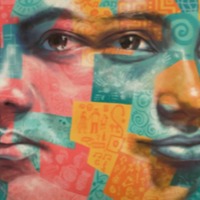
Nadia Murad (Narrative 2)
ISIS has singled out the Yazidi minority, notably its women and children, for particularly brutal treatment. In August 2014, ISIS fighters abducted hundreds, possibly thousands, of Yezidi men, women and children who were fleeing the IS takeover from the Sinjar region, in the north-west of the country. Hundreds of the men were killed and others were forced to convert to Islam under threat of death. Younger women and girls, some as young as 12, were separated from their parents and older relatives and sold, given as gifts or forced to marry ISIS fighters and supporters. Nadia was kidnapped by ISIS. when she was twenty-one years old. She was loaded on to a bus with other young women. Upon arrival in Mosul, the women were beaten, sold and forced to convert to Islam. She details how she feels about the complicity of ISIS women in the exploitation of Yazidis. After being passed from captor to captor, raped on a daily basis, and deprived of basic human comforts like food and companionship, Nadia managed to escape. She jumped over a wall, walked through the night, and knocked on the door of strangers who risked their lives hiding her until it was safe to get her to a refugee camp. From there, Nadia went to Germany.
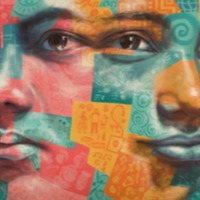
Lena
There are an estimated 403,000 people living in modern slavery in the United States (GSI 2018). Sex trafficking exists throughout the country. Traffickers use violence, threats, lies, debt bondage and other forms of coercion to compel adults and children to engage in commercial sex acts against their will. The situations that sex trafficking victims face vary, many victims become romantically involved with someone who then forces them into prostitution. Others are lured with false promises of a job, and some are forced to sell sex by members of their own families. Victims of sex trafficking include both foreign nationals and US citizens, with women making up the majority of those trafficked for the purposes of commercial sexual exploitation. In 2015, the most reported venues/industries for sex trafficking included commercial-front brothels, hotel/motel-based trafficking, online advertisements with unknown locations, residential brothels, and street-based sex trafficking. Lena* left home at the age of fourteen and was trafficked in Oklahoma by a man for commercial sexual exploitation.
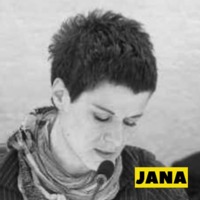
Jana
There are an estimated 5,000 people living in modern slavery in Slovenia (GSI 2018). Traffickers exploit foreign workers and undocumented migrants vulnerable to labour trafficking in forced begging, domestic servitude, and in construction, transportation, and hospitality. Women and children from Slovenia, Eastern European, Western Balkan, Southeast Asian, and Latin American countries to sex trafficking within Slovenia, and many also transit to Western Europe, primarily Italy and Germany, where they are at risk of sexual and labour exploitation. Ethnic Roma are particularly vulnerable to trafficking in Slovenia. Jana was trafficked at the age of 13 in Slovenia by a friend who had arranged a job interview for her. During the interview she was kidnapped, raped and forced into prostitution.

Medina
There are an estimated 794,000 people living in conditions of modern slavery in Russia (GSI 2018). Forced labour remains the predominant form of human trafficking in the country. Many migrant workers experience exploitative labour conditions characteristic of trafficking cases, such as withholding of identity documents, non-payment for services rendered, physical abuse, lack of safety measures, or extremely poor living conditions. Women and children are also subjected to commercial sexual exploitation and sex trafficking in prostitution and pornography. Medina*, a 15-year-old girl from Kazakhstan was trafficked after being sold by her parents. The man who bought her forged her birth certificate and took her to Russia where she was forced to do domestic work and was subjected to sexual exploitation.
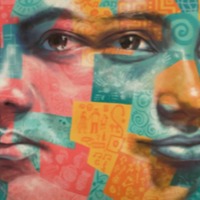
Albert
There are an estimated 794,000 people living in conditions of modern slavery in Russia (GSI 2018). Forced labour remains the predominant form of human trafficking in the country. Labour trafficking has been reported in the construction, manufacturing, logging, textile, and maritime industries, as well as in sawmills, agriculture, sheep farms, grocery and retail shops, restaurants, waste sorting, street sweeping, domestic service, and forced begging. Many migrant workers experience exploitative labour conditions characteristic of trafficking cases, such as withholding of identity documents, non-payment for services rendered, physical abuse, lack of safety measures, or extremely poor living conditions. Albert*, A 17-year-old man from Novosibirsk in Russia was kidnapped and coerced into construction work. For six months he worked long hours under constant supervision and the threat of violence.
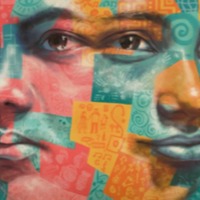
Edel
There are an estimated 794,000 people living in conditions of modern slavery in Russia (GSI 2018). Forced labour remains the predominant form of human trafficking in the country. Labour trafficking has been reported in the construction, manufacturing, logging, textile, and maritime industries, as well as in sawmills, agriculture, sheep farms, grocery and retail shops, restaurants, waste sorting, street sweeping, domestic service, and forced begging. Many migrant workers experience exploitative labour conditions characteristic of trafficking cases, such as withholding of identity documents, non-payment for services rendered, physical abuse, lack of safety measures, or extremely poor living conditions. Edel, a 47-year-old man from Uzbekistan was kidnapped on the way to Russia. His passport was taken, and he was forced to work making mats from cane and sleep in a cattle shed.
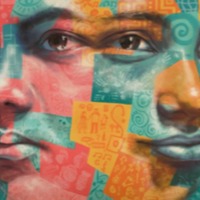
Aisuluu
There are an estimated 24,000 people living in modern slavery in Kyrgyzstan (GSI 2018). The country remains a source, transit and destination country for men, women and children subjected to forced labour and sex trafficking. Women in the country are often subject to kidnapping and forced marriage, known as Ala kachuu. The act was outlawed in the country in 2013 when authorities recognised it could lead to marital rape, domestic violence and psychological trauma. However, in some communities the practice remains common. Aisuluu experienced Ala kachuu (bride kidnapping) when she was seventeen years old. She was held in a house by her kidnappers for two months before she was forcibly married and experience violence for a further two years. Aisuluu tells of the difficulties of surviving bride kidnapping and being treated as a second-class citizen.
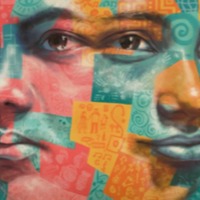
Dimitra
There are an estimated 89,000 people living in modern slavery in Greece (GSI 2018). Traffickers exploit people from Greece and aboard in the country. Women and children from Eastern and Southern Europe, South and Central Asia, China, Georgia, Iraq, Nigeria, and Russia are subjected to sex trafficking in brothels, on the street, in massage salons and in hotels. While people subjected to forced labour are primarily children and men from Africa, Eastern Europe and South Asia. Debt bondage is reported to occur in the agricultural industry in Greece. And the marginalised Romani children are forced to sell goods on the street, beg, and commit theft. Refugee and migrant travellers are at an increased risk of human trafficking and modern slavery. Dimitria was kidnapped as a child and her trafficker attempted to sell her organs. She was discovered by police after guests at the hotel where she was being kept made a noise complaint.
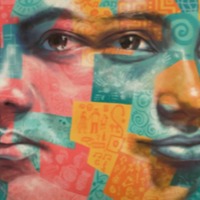
Grizelda
There are an estimated 155,000 people living in modern slavery in South Africa (GSI 2018). South Africa remains a source, transit and destination country for men, women and children subjected to forced labour and sex trafficking. South African children were recruited from poor, rural areas to urban centres, such as Johannesburg, Cape Town, Durban, and Bloemfontein, where girls were subjected to sex trafficking and domestic servitude and boys are forced to work in street vending, food service, begging, criminal activities, and agriculture. Local criminal rings organized child sex trafficking, Russian and Bulgarian crime syndicates facilitated trafficking within the Cape Town commercial sex industry, and Thai and Chinese nationals often organized the sex trafficking of Asian men and women. Nigerian syndicates dominated the commercial sex industry in several provinces. To a lesser extent, syndicates recruited South African women to Europe and Asia, where some are forced into prostitution, domestic servitude, or drug smuggling. Grizelda Grootboom was 18 years old when a trip to Johannesburg with a friend ended in her being trafficked in Yeoville. She was tied up in a room for two weeks and forced to work as a prostitute. Grizelda now works for Embrace Dignity, advocating to prevent violence against women, commercial and sexual exploitation and human trafficking.
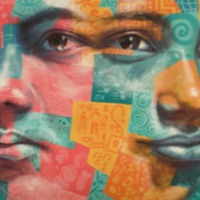
Katia
There are an estimated 509,000 people living in modern slavery in Turkey (GSI 2018). As a source, transit and destination location for immigration, human trafficking is prevalent in the country. Trafficking victims in Turkey are primarily from Central and South Asia, Eastern Europe, Azerbaijan, Indonesia, Morocco, and Syria. Women are mainly trafficked to Turkey as sex workers. Katia was trafficked into commercial sexual exploitation from Ukraine to Turkey. She was drugged and beaten and forced to sleep with men against her will on a daily basis.
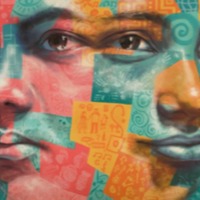
Brinda
The Global Slavery Index 2018 estimates that on any given day there were nearly 8 million people living in modern slavery in India. The GSI 2018 reports an emerging trend in northeast India where organised trafficking syndicates operate along the open and unmanned international borders, duping or coercing young girls seeking employment outside their local area in to forced sexual exploitation. Many women and girls are lured with the promise of a good job but then forced in to sex work, with a 'conditioning' period involving violence, threats, debt bondage and rape. Brinda* was kidnapped and sold to a man who forced her into prostitution in Delhi. She was beaten and subjected to sexual exploitation daily.
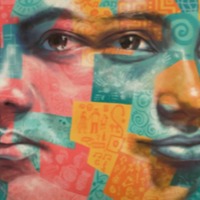
Zinab
ISIS has singled out the Yazidi minority, notably its women and children, for particularly brutal treatment. In August 2014, ISIS fighters abducted hundreds, possibly thousands, of Yezidi men, women and children who were fleeing the IS takeover from the Sinjar region, in the north-west of the country. Hundreds of the men were killed and others were forced to convert to Islam under threat of death. Younger women and girls, some as young as 12, were separated from their parents and older relatives and sold, given as gifts or forced to marry ISIS fighters and supporters. Zinab and her children were kidnapped by ISIS from her village. She was taken to Syria and sold four times, subjected to sexual violence and forced religious conversion. Zinab used a smuggling network to escape Syria after 20 months.
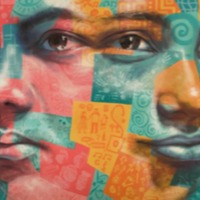
Francis Bok (Narrative 2)
There are an estimated 465,000 people living in modern slavery in Sudan (GSI 2018). Traffickers exploit foreign and domestic victims in the country. Migrant children from West and Central Africa are exploited in forced labour for begging, public transportation, large markets and sex trafficking. Business owners, informal mining operators, community members and farmers exploit children working in brick making factories, goldmining, collective medical waste, street vending and agriculture. Children are exposed to threats, physical and sexual abuse, as well as hazardous working conditions and limited access to education or health services. At the age of four Francis Bok was kidnapped from a local market in South Sudan and forced into domestic slavery in northern Sudan. For 10 years he was forced to work long hours with no rest, treated like an animal by the family he worked for. Bok tried to escape twice before was finally being successful, reaching a refugee camp in Egypt. After a while in the camp he was able to get refugee status in the United States. In 2011 Francis Bok returned to South Sudan and works as a public relations manager at a construction company.
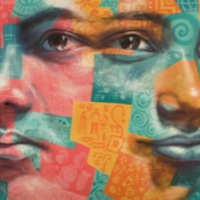
Trishna
The Global Slavery Index 2018 estimates that on any given day there were nearly 8 million people living in modern slavery in India. The GSI 2018 reports an emerging trend in northeast India where organised trafficking syndicates operate along the open and unmanned international borders, duping or coercing young girls seeking employment outside their local area in to forced sexual exploitation. Many women and girls are lured with the promise of a good job but then forced in to sex work, with a 'conditioning' period involving violence, threats, debt bondage and rape. In 2010, Trishna was 14 years old when she met a boy who lived in a village close to hers. He kidnapped her, took her to different city and sold her to traffickers who said she would have to dance to earn back the money they had paid. While Trishna was finally rescued after around 6 months, her experience with the police was not a pleasant one. They sexual abused her, threatening to tell people that she had chosen this life. Upon returning home, people in Trishna’s village did not treat her the same and her mental health has suffered as a result. In 2015, Trishna was finally able to get help through a psychiatrist and an NGO who reached out to assist her.

Chong Kim
There are an estimated 403,000 people living in modern slavery in the United States (GSI 2018). Sex trafficking exists throughout the country. Traffickers use violence, threats, lies, debt bondage and other forms of coercion to compel adults and children to engage in commercial sex acts against their will. The situations that sex trafficking victims face vary, many victims become romantically involved with someone who then forces them into prostitution. Others are lured with false promises of a job, and some are forced to sell sex by members of their own families. Victims of sex trafficking include both foreign nationals and US citizens, with women making up the majority of those trafficked for the purposes of commercial sexual exploitation. In 2015, the most reported venues/industries for sex trafficking included commercial-front brothels, hotel/motel-based trafficking, online advertisements with unknown locations, residential brothels, and street-based sex trafficking. Chong Kim’s family moved to the United States from South Korea when she was a toddler. At the age of 19 Kim met a man on a night out in Dallas, Texas whom she began dating. After a few weeks of dating, this man abducted Chong Kim and destroyed her naturalization documents. She was forced into prostitution, sent out with other women to a variety of places across the country. After a year and a half Kim was able to escape while working a casino in Las Vegas, befriending people on the maintenance staff who helped her escape.